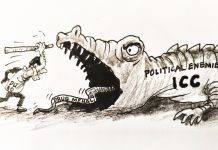
I have had this ambitious project of writing another group of short stories in Waray. I have been grappling with it for years now, but it is making no headway. Other concerns, issues, activities, and the like are preoccupying me. Given the chance and the needed resources, I would love to have this project push through.
The categorization of Waray as a major language in the country took place, in the year 2000, through a survey that tried to determine what these languages are. The criterion used is the number of people who use them. A language qualifies as a major tongue with at least one million speakers. Spoken largely in the islands of Samar, Leyte, and Biliran, Waray already had more than one million users then, hence its inclusion in the group.
Despite this status, some people think that Waray is still a dying language, owing to its usage that is mostly limited to oral communication. When it comes to written form, this language hardly exists, particularly in fiction. This makes the observation quite true because, indeed, Waray literature is one of the poorest bodies of literature in the country. It might boast of a vibrant poetry—most Waray writers are poets—songs, plays, and folkloric narratives such as legends, myths, folktales, and fables; but in the area of realistic fiction rightly represented by the novel and the short story, this literature verifiably lags.
This is quite unfortunate because if we are to document how Waray is used naturally and conversationally, we have to do it in fiction writing, which naturally makes use of a language. We cannot successfully do it with poetry, or with songs, or even with plays wherein language is loaded with irony, sarcasm, metaphors, and other figures of speech that deviate from normal ways of expression. Realistic fiction then must be abundantly cultivated for us to record, or preserve, this “dying” language.
Somehow, earlier attempts had gotten fiction writing started. Norberto Romualdez did his share in his time. But he did not prove productive enough. Pet Labro and the other fictionists in the book, Ani, (published by the NCCA) likewise yielded a handful of Waray short stories. But this collection is still too limited to augment Waray fiction. In 2011, fresh from the VisWrite Creative Writing Workshops of Prof. Merlie Alunan, Doms Pagliawan was able to publish the book, Kuraramag, a collection of his own short stories in Waray. This book doubtless made a milestone in Waray fiction, but it does not sufficiently enrich this body of literature. For one, the stories are mere manifestations of the author’s obvious preoccupation with the plot, which eventually classifies them as typical tales, rid of peculiar styles, techniques, and aesthetic qualities albeit not all, for some of these stories made a name for themselves.
With the advent of MTB-MLE, fiction writing particularly children’s stories had somehow flourished. But while some of these writers do have adequate training, some being seasoned writers, the bigger number seems to be just driven by the “glory of the byline.” They keep on writing stories just because friends and acquaintances are showering them with praise. But when it comes to technicalities, their stories prove wanting, showing poor quality.
In 2016, Pagliawan again was able to publish Tabsik hin Kagamhanan, which readily earned the distinction as the first original novel in Waray. This, according to Jerry Gracio, is another milestone of Eastern Visayan literature. There is no denying it since, for decades in the past, this body of literature was indeed devoid of a novel; but with this book, this sad plight was finally addressed. Soon, other novels are sure to see print but thank heavens the novelistic ground is no longer that barren. The problems of dearth in short fiction, and the absence of extended fiction, are getting resolved.
It is hoped, with this collection of short stories in progress, that the area of Waray fiction will be further enriched. Its aim is not just numerical augmentation; it is one of packaging stories that showcase the coming of age of this literary genre in Waray. There is an intentional attempt, as exemplified by the entries submitted, to abandon the traditional mode of storytelling that was merely obsessed with the sequencing of events to create plot structure. The more complex and technical aspects that ensure quality and creativity are utilized, instead, such as enhancement of characterization, expert handling of various points of view, development of local color, diverse structuring of the plot, employment of symbols and other literary devices, and utter control and manipulation of conflict to create suspense.
Providing additional impetus to this fictional collection is the idea of using, as literary materials, historic and momentous events for Eastern Visayas is known for. These events abound in the region’s history, and drawing people’s attention to them through fictional creations enhances their worth. One may take, for instance, the undying curiosity over the disastrous onslaught of typhoon Yolanda, or the marvels behind the mythical City of Biringan. Moreover, the stories in this collection are likewise made expressive of Waray culture, lifeways, aspirations, sense of community, and social identity.
In short, the thematic treatment and presentation of the stories are consciously done in such a way that coverage is encompassing and representative enough. Furthermore, besides varying the themes, the author makes sure the human experiences revealed in the stories are not just commonplace, but peculiar enough you hardly see them in a million tales. A story may happen to be familiar, or common, but its uniqueness lies in style and choice of literary devices.
These emerging stories, despite their literary merits, may not see the light of day as they clash with their rivals. But, should it happen, Waray literature would surely miss some works that could push it onward, with marked sophistication. This is not a messianic, arrogant claim, or a manifestation of writing monopoly—it’s just to express the truth.



